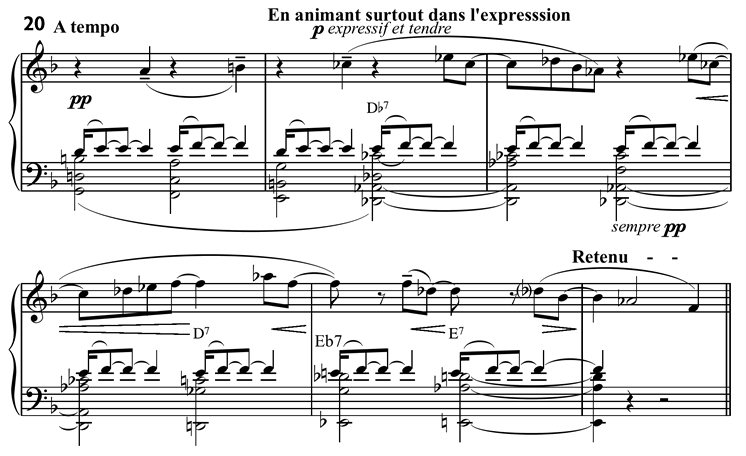Des pas sur la neige - Prelude by Claude Debussy
José Rodríguez Alvira
Measures 20 to 25
The A natural from the previous measure takes us back to what we heard on measure 5. A variation will lead us to the climax of the prelude:

Nicole Muller, piano - Piano Society
The variation begins on measure 21 with a Cb in the melody. In the third beat a Db dominant seventh chord appears on the left hand. A series of ascending chromatic dominant seventh chords follows: D7 on measure 23, written with a Gb instead of a F#, Eb7 on measure 24 and finally E7 on the third beat of measure 24, the G# written as Ab. These chords are one of the three harmonic-melodic layers that are part of this section.
The second layer is made by the note E and F of the motive. These notes add extensions to the dominant chords. Over the Db dominant chord, the E is an appoggiatura to the third but it also suggests an augmented ninth. The E adds a ninth to the D7 chord but it also is an appoggiatura to the augmented ninth (E# written as F). Over the Eb chord the E is a minor ninth and an appoggiatura to the major ninth. Finally the E is an appoggiatura to the minor ninth.
The third layer is the diatonic melody played by the right hand. It is the continuation and development of the several times interrupted melody. The tonic of the mode is not clear and the absence of the note G makes it more difficult to identify the mode. If we assume the Ab as the tonic and we add a Gb we would have a Dorian mode. If we add a G natural it would be the ascending minor melodic scale:

The importance of this section is the combination of the three layers: the dominant seventh chords, the notes of the motive and the diatonic melody. This combination creates harmonic density and expressive intensity. The composer highlights the intensity with the sempre pp indication. Although the melody and motive notes can be explained using chord extensions, we find clear polytonal characteristic in this passage.